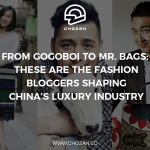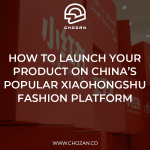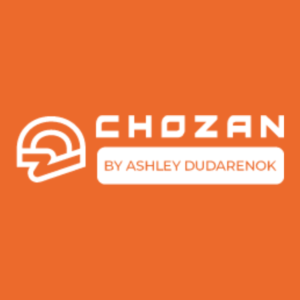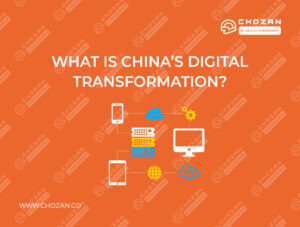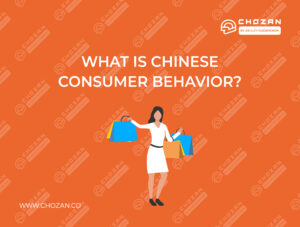Most marketers will have heard that Pinterest has joined Facebook, Twitter, and Instagram on the list of sites blocked in China.
While Pinterest has never been as popular in China as domestic social media giants like WeChat and Weibo, it has been a useful tool for luxury brands marketing to Chinese consumers.
The importance of Pinterest for brands
The unique features of Pinterest have attracted trendsetting Chinese fashionistas with a penchant for luxury goods, and their curated image boards served to drive referral traffic to luxury brands’ websites and blogs, raising public awareness of brands and their products.
Big names, such as Chanel, Hermes, and Louis Vuitton, have gained substantial exposure on the site. Some luxury brands in China have even used Pinterest as a platform for unveiling their latest products.
For example, Hong Kong-based premium Chinese brand Shanghai Tang debuted its 2013 Spring/Summer collection on the site. Overseas luxury e-commerce sites have also benefited from Pinterest helping them reach out to Chinese consumers.
Portero.com, a pre-owned luxury marketplace based in New York, pins images of their products on Pinterest to attract buyers from China.

↑Overseas luxury e-commerce Portero.com used Pinterest to attract Chinese shoppers.
Pinterest being blocked in China doesn’t mean all is lost for luxury marketers using the platform as China has never been short on alternatives to Pinterest. When the platform first launched and gained traction in the Western tech circle, many Chinese internet companies immediately created lookalike sites based on Pinterest’s core concept. Beginning in around 2012, tons of similar online services in China popped up, each trying to stand out as the Chinese version of Pinterest.
Fashion and styling sites Mogujie (蘑菇街) and Meilishuo (美丽说) are two early imitators that later successfully evolved and figured out a business model that worked for them in China. Even though they both have still retained their photo-sharing features, they have now transformed into e-commerce sites that rely on a group of influential online buyers to sell their products. The majority of other sites that launched during the same period have since left the battlefield.
Below are five Pinterest-like websites that have survived the fierce competition in China and remain options for luxury brands looking to gain exposure among China’s internet users.
1. Huaban

↑Huaban is a Chinese photo-sharing platform that is most like Pinterest.
Huaban is an online space for users to collect photos and images based on their interests and share them with friends. The website is perhaps the closest version to Pinterest in China, with a highly similar layout and website design.
Huaban has gathered a large user base who pin images from elsewhere on the web to their boards daily. This has made Huaban become a leader among rival sites. Huaban also allows users to share their images and boards on popular social media apps, including WeChat and Weibo.

↑French luxury brand Louis Vuitton has a presence on Huaban.
2. Duitang

↑Duitang was founded in 2010 and focuses on developing an engaging online community among people who share the same interests.
Zhang Juan, a former Alibaba employee, founded Duitang with the goal to make it the Chinese Pinterest. The website has added several features to encourage users to interact and form an online community that has active daily discussions.
In 2014, Chinese media reported that Alibaba Group invested more than 10 million RMB (US$1.4 million) in the site. However, unlike competitors that quickly introduced an e-commerce feature after gaining a certain number of users, Duitang has been relatively slow in pushing forward in this direction. Currently, Duitang features posts with beauty products from international luxury brands.
3. Topit.me

↑Topit.me features user-generated content instead of links from outside websites.
Topit.me, or youmeitu in Chinese pinyin, is an online photo gathering website that was established in 2010. Unlike the previous two examples, Topit relies on user-generated content to run the site. The registered users of the website exceeded 10 million in 2016, according to Chinese media reports. Pictures of products from major luxury brands can be found via a quick search on Topit.
4. Aiguangjie

↑Alibaba’s Aiguangjie features Taobao stores that sell lookalike Chloe Faye handbags.
China’s e-commerce giant Alibaba was also among the companies that jumped on the Pinterest copycat bandwagon in 2012. Its service, called Aiguangjie, meaning “love shopping,” was created in order to use a Pinterest-like model to sell products on Taobao, according to Chinese media reports.
Most images on the website come with purchasing links to Taobao stores.
Alibaba has been publicly calling for the Chinese government to help crack down on counterfeit goods and sellers on its e-commerce sites, but on Aiguangjie, it’s fairly easy to find third-party knockoffs of luxury brand products. Currently, the website features Taobao stores selling handbags that look similar to Chloe’s Faye bags.
5. Zhipin

↑Zhipin has a close relationship with Chinese independent designers and local brands.
Zhipin is a fashion and lifestyle website that allows users to share pictures with their social media followers. What distinguishes it from others is its relationship with Taobao stores run by Chinese designers and independent brands. Aside from being a platform for users to post and share pictures, there is a section on Zhipin’s website dedicated to promoting brands’ online shops. Users can browse through and visit these stores directly from Zhipin, which can help brands generate web traffic. Big brands such as Estée Lauder have also formed partnerships with the site.
Disclaimer:

This article was originally published on Jing Daily, written by Yiling Pan.
To get deeper insights into Chinese social media marketing and utilizing it to serve your business, join ChoZan, a training and resources platform for Chinese social media marketers.
Please follow our official WeChat account to get more updates about the latest news, feature updates and case studies.

Share this article on your favourite social media
Read more related posts
-
Luxury Brands Finally Begin to Master WeChat Commerce
Although the global personal luxury market is stuck in a holding pattern for the foreseeable future, China is likely to continue to make up for weaker demand elsewhere. China’s Domestic…
-
Luxury Brands Finally Begin to Master WeChat Commerce
Although the global personal luxury market is stuck in a holding pattern for the foreseeable future, China is likely to continue to make up for weaker demand elsewhere. China’s Domestic…
-
From Gogoboi to Mr. Bags: These Are the Fashion Bloggers Shaping China’s Luxury Industry
In her controversial commentary, fashion critic Suzy Menkes once questioned the professionalism and contributions of fashion bloggers in the era of smartphones and social media. Menkes, however, was being exceptionally…
-
How to Launch Your Product on China’s Popular Fashion Platform Red (Xiaohongshu)
While most of you are using Amazon and eBay, people in China are shopping on sites and apps like Tmall, Taobao, JD, Suning, Kaola, VIP.com, and the very popular new kid…
-
Luxury Brands Finally Begin to Master WeChat Commerce
Although the global personal luxury market is stuck in a holding pattern for the foreseeable future, China is likely to continue to make up for weaker demand elsewhere. China’s Domestic…


